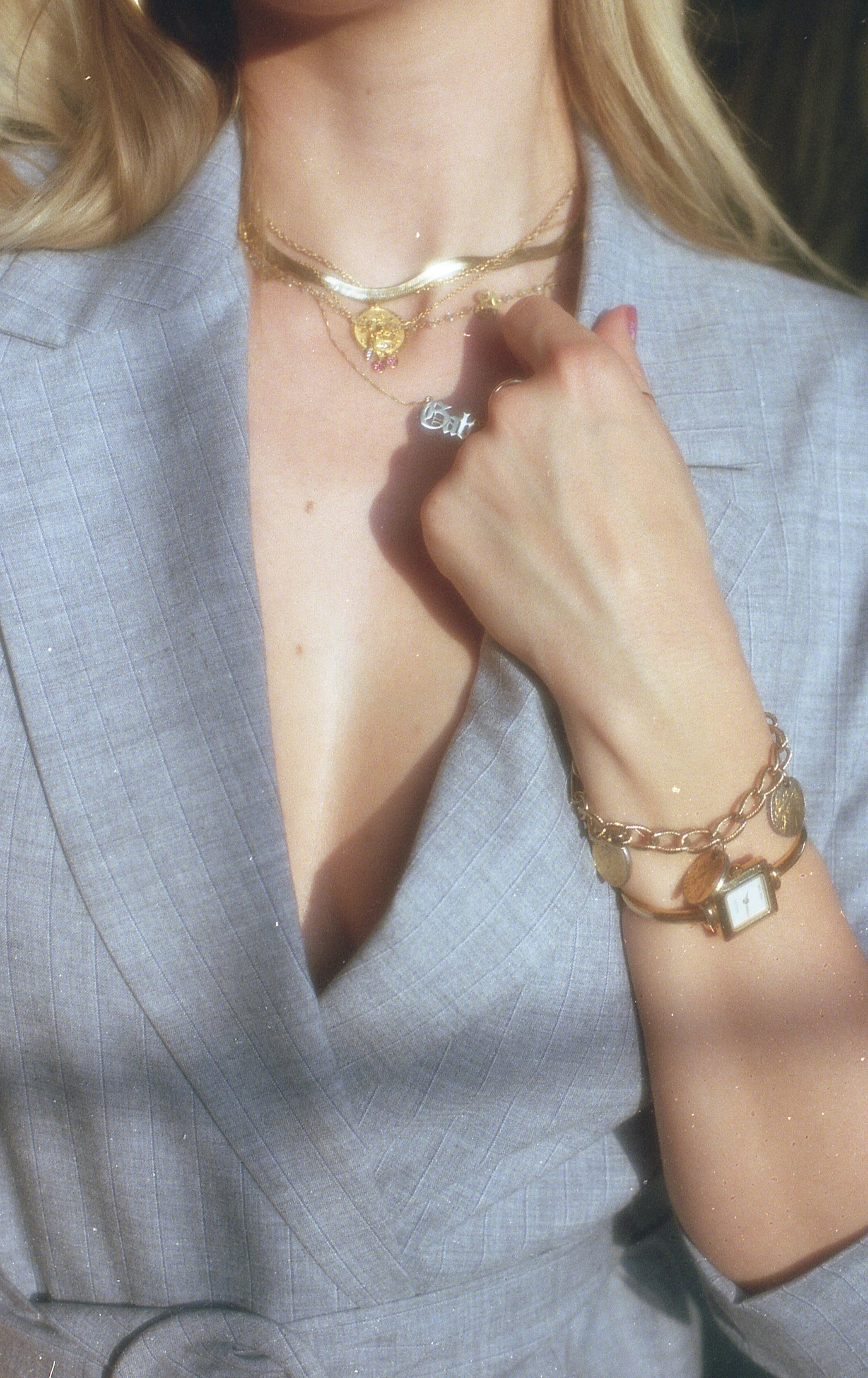The Science Behind Sparkle: Understanding Light and Reflection in Jewelry

Jewelry, particularly engagement rings, often captivates us with its brilliance and sparkle. Have you ever wondered what makes diamonds and gemstones shimmer and shine so beautifully? In this blog, we'll explore the science behind sparkle, exploring how light interacts with jewelry to create dazzling effects.
Understanding these principles can help you appreciate the craftsmanship of engagement ring design and make informed choices when selecting your perfect piece.
How Light Interacts with Jewelry
The sparkle of jewelry is primarily due to the way light interacts with its surfaces and materials. When light strikes a polished surface, such as that of a diamond or gemstone, it undergoes several optical processes that enhance its visual appeal.
Reflection
Reflection is the primary mechanism responsible for the sparkle of jewelry. When light hits the surface of a polished gemstone or metal, it bounces off at various angles. The angles of reflection determine how much light is reflected back to the viewer's eye. A well-cut diamond in your engagement ring design, for example, reflects light back through its top facets, creating a brilliant display of sparkle.
Refraction
Refraction occurs when light passes through a transparent or translucent material, such as a diamond or colored gemstone. As light enters the material, it bends or changes direction, depending on the material's refractive index and the angles of its facets. This bending of light causes dispersion, where white light separates into its spectral colors, creating flashes of color known as fire in diamonds and gemstones.
The Importance of Cut and Facets
The cut of a diamond or gemstone plays a crucial role in maximizing its sparkle and brilliance. A well-cut stone is designed to reflect and refract light effectively, enhancing its visual appeal. Different types of cuts, such as round brilliant, princess, and emerald cuts, are chosen based on their ability to optimize light performance.
Brilliant Cuts
Brilliant cuts, such as the round brilliant cut, are designed with multiple facets arranged to maximize light return and sparkle. These cuts are known for their fire and brilliance, making them popular choices for engagement rings.
Step Cuts
Step cuts, such as the emerald cut, feature fewer facets arranged in parallel lines. While they may not sparkle as intensely as brilliant cuts, step cuts showcase a different kind of elegance and sophistication, with their emphasis on clarity and reflective planes.
Mixed Cuts
Mixed cuts combine elements of both brilliant and step cuts to create unique patterns of light reflection and refraction. These cuts are often chosen for their ability to balance brilliance and depth, offering a distinctive look.
The Role of Metal Settings
In engagement ring design, the choice of metal setting can influence the way light interacts with the gemstones. Different metals, such as platinum, gold, and silver, have varying degrees of reflectivity and color, which can affect the overall appearance of the ring.
Platinum
Platinum is highly reflective and durable, making it an excellent choice for showcasing the brilliance of diamonds and gemstones. Its bright white color enhances the sparkle of diamonds by providing a neutral background.
Gold
Gold, available in yellow, white, and rose hues, adds warmth and richness to engagement ring designs. While yellow gold complements colored gemstones, white gold and rose gold settings can enhance the sparkle of diamonds by providing contrasting tones.
Silver
Silver settings offer a classic and affordable option for engagement rings. While less reflective than platinum and gold, silver provides a bright backdrop for showcasing gemstones, especially diamonds.
Understanding Diamond and Gemstone Characteristics
When choosing an engagement ring, understanding the characteristics of diamonds and gemstones can help you select a stone that maximizes sparkle and beauty.
The 4Cs of Diamonds
The 4Cs—cut, color, clarity, and carat weight—are fundamental factors that determine a diamond's quality and visual appeal.
- Cut: A diamond's cut grade directly influences its sparkle and brilliance. Well-cut diamonds reflect light effectively, creating a dazzling display.
- Color: Diamond color ranges from colorless to light yellow or brown. Colorless diamonds allow more light to pass through, enhancing their sparkle.
- Clarity: Clarity refers to the presence of internal and external flaws or inclusions within a diamond. Flawless or internally flawless diamonds allow light to pass through unobstructed, maximizing sparkle.
- Carat Weight: Carat weight measures a diamond's size. Larger diamonds may appear more brilliant due to their increased surface area and light reflection.
Gemstone Characteristics
Colored gemstones, such as sapphires, rubies, and emeralds, also vary in their sparkle and brilliance. Factors such as color saturation, transparency, and cut affect how light interacts with these gemstones.
Enhancing Sparkle with Jewelry Care
Proper care and maintenance of your jewelry can preserve its sparkle and brilliance over time. Here are some tips for keeping your engagement ring looking its best:
Regular Cleaning
Regularly clean your engagement ring to remove dirt, oils, and debris that can dull its sparkle. Use a soft brush, mild soap, and warm water to gently clean the stone and metal setting.
Professional Inspection
Schedule regular inspections with a jeweler to check for loose stones, worn prongs, or other issues that could affect the ring's appearance and durability.
Storage
Store your engagement ring in a soft pouch or jewelry box to protect it from scratches and exposure to harsh chemicals. Avoid storing multiple pieces of jewelry together to prevent them from scratching each other.
Understanding the science behind sparkle enhances your appreciation for the beauty and craftsmanship of engagement ring design. From the way light reflects off polished surfaces to the role of cut and metal settings, each element contributes to the overall brilliance of jewelry.
(Devdiscourse's journalists were not involved in the production of this article. The facts and opinions appearing in the article do not reflect the views of Devdiscourse and Devdiscourse does not claim any responsibility for the same.)










